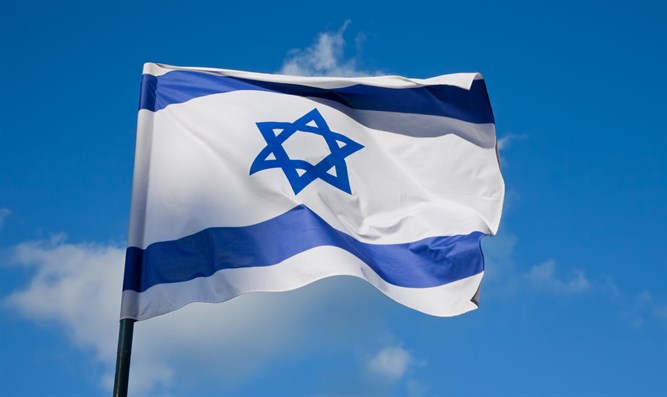Ansche Chesed Stands with Israel – Ways to Help and Resources
How to Help
Hostages and Missing Families Forum
Thinking About the Conflict
Prayers and Songs
Children/Teens
How to Help
As the war in Israel and Gaza drags on, our responsibility for our Israeli siblings only deepens.
And because every human life is equally precious, bearing the sacred image of the Creator, we share in responsibility for easing the misery of Palestinian civilians, trapped in the war against Hamas’ vicious tyranny. Let us remember the teaching of Malakhi 2.10: “Have we not all one parent? Did not one God create us all?” הֲל֨וֹא אָ֤ב אֶחָד֙ לְכֻלָּ֔נוּ הֲל֛וֹא אֵ֥’ל אֶחָ֖ד בְּרָאָ֑נוּ?
Here are some ways you can contribute to rebuilding Israel from out of the wreckage, maintaining its Jewish and democratic values, supporting all its citizens, and feeding Palestinian and Israeli civilians, hungry and displaced by the fighting:
Ansche Chesed supports the Kfar Azza Foundation as it rebuilds that kibbutz, which lost 64 members on October 7, while 18 were kidnapped as hostages. Virtually all residents remain evacuated, and still need support. Our June synagogue trip visited the kibbutz and witnessed the devastation.
World Central Kitchen is an international leader in feeding the hungry. They have served millions of meals to Gazans and to displaced Israelis from the north and south.
Brothers and Sisters for Israel is the civil aid arm of the democracy protest movement. After October 7, this group of activists pivoted to become Israel’s leading organization for front line help, providing food and water to evacuated families, medical supplies for soldiers and civilians, support for businesses in crisis and educational support for traumatized kids.
The New Israel Fund is the key umbrella organization funding many of Israel’s liberal NGOs, working on issues of religious pluralism, human rights, and shared society for all citizens. In addition to its work within Israel, you can find out more about NIF’s campaign for humanitarian aid in Gaza here.
The Abraham Initiatives is a leading grassroots group building shared society for all Israeli citizens, Jewish and Arab alike.
Tag Meir is an anti-racism coalition, focused especially on fighting hate crimes. Vigilante attacks against West Bank Arabs and immigrants were sometimes called a tag mechir, or “price tag.” This coalition named itself tag meir, or “light tag,” seeking to transcend religious and ethnic divisions and reinforce the humane values of the Jewish people.
The UJA-Federation of New York maintains the Israel Emergency Fund. Their connections with the government and Jewish Agency are unmatched. They will know where funds are needed and see to it that they arrive.
Magen David Adom, the Israeli Red Cross, always comes through with ambulances and emergency medical support, fulfilling the mitzvah of pikuah nefesh, saving lives, every day.
Hostages and Missing Families Forum NY
The Hostages and Missing Families Forum hosts a weekly Run for Their Lives solidarity walk/run around the reservoir in Central Park every Sunday at 10am (at 90th Street and Central Park West).

For more events, subscribe to their newsletter or join their WhatsApp group.
Thinking About the Conflict
Rabbi Kalmanofsky expanded on his Dvar Torah from Sanctuary Shabbat Services (originally from October 14) on the Shemini Atzeret War and Parshat Bereishit, discussing the anxiety, fear, and ethical issues surrounding the war. In November, he shared his thoughts on his experiences during a trip to Israel and participating in the November March for Israel Rally in Washington, D.C.
In April, he shared his sermon from Shabbat HaGadol about celebrating Passover in this unique year. He also posted his thoughts for Yom Ha’Atzmaut in May.
Most recently, he shared his powerful experiences from Ansche Chesed’s June Trip to Israel. You can read his first, second, and third posts.
Prayers and Songs
Prayer for the State of Israel
| Parent in heaven, Rock and Redeemer of Israel, | אָבִינוּ שֶׁבַּשָּׁמַיִם, צוּר יִשְׂרָאֵל וְגוֹאֲלוֹ |
| Bless the State of Israel, the first flower of our redemption. | בָּרֵךְ אֶת מְדִינַת יִשְׂרָאֵל, רֵאשִׁית צְמִיחַת גְּאֻלָּתֵנוּ. |
| Guard it with Your kindness and shield it with Your shelter of peace. | הָגֵן עָלֶיהָ בְּאֶבְרַת חַסְדֶּךָ, וּפְרֹשׂ עָלֶיהָ סֻכַּת שְׁלוֹמֶךָ, |
| Share Your light and truth with its leaders, its ministers and every citizen in Israel, | שְׁלַח־אוֹרְךָ וְאֲמִתְּךָ לרָאשֵׁיהָ שָׂרֶֽיהָ וְכָל הָֽאֶזְרָח בְּיִשְׂרָאֵל |
| So that they may sustain a country based upon the principles of freedom, justice and peace, as envisioned by the biblical prophets. | לְקַיֵּים מְדִינָֽה מֻשְׁתֶּתֶת עַל־יְסוֹדוֹת הַחֵרוּת הַצֶּדֶק וְהַשָּׁלוֹם לְאוֹר חֲזוֹנָם שֶׁל נְבִיאֵי יִשְׂרָאֵל |
| Plant within Israel the love of Torah, whose paths are pleasant, whose ways are peaceful. | .טַע בְּתוֹכָהּ אַהֲבַת תּורָה שֶׁדְּרָכֶיהָ דַרְכֵי נֹעַם וְכָל נְתִיבוֹתֶיהָ שָׁלוֹם |
| Strengthen those who defend our Holy Land. May they go forth proudly, and may they return home safely. | חַזֵּק אֶת יְדֵי מְגִנֵּי אֶרֶץ קׇדְשֵׁנוּ,כִּי בְשִׂמְחָה יֵצֵאוּ וּבְשָׁלוֹם יוּבָלוּן |
| Grant peace throughout the land and eternal joy to all who live there. | וְנָתַתָּ שָׁלוֹם בָּאָרֶץ וְשִׂמְחַת עוֹלָם לְכׇל־יוֹשְׁבֶֽיהָ |
| May Israel realize the prophetic vision: | וְקַיֵּים בְּיִשְׂרָאֵל מִּקְרָא שֶּׁכָּתוּב : |
| “May Zion be redeemed in justice, and those who return to her in righteousness.” | צִיּ֖וֹן בְּמִשְׁפָּ֣ט תִּפָּדֶ֑ה וְשָׁבֶ֖יהָ בִּצְדָקָֽה׃ |
| And let us say Amen. | וְנֹאמַר אָמֵן |
Hatikva
| As long as within our hearts | כָּל עוֹד בַּלֵּבָב פְּנִימָה |
| The Jewish soul yearns, | נֶפֶשׁ יְהוּדִי הוֹמִיָּה |
| As long as toward the East | וּלְפַאֲתֵי מִזְרָח קָדִימָה |
| An eye gazes to Zion. | עַיִן לְצִיּוֹן צוֹפִיָּה |
| Our hope is not yet lost, | עוֹד לֹא אָבְדָה תִּקְוָתֵנוּ |
| The hope, 2,000 years old, | הַתִּקְוָה בַּת שְׁנוֹת אַלְפַּיִם |
| To be a free people in our homeland | לִהְיוֹת עַם חָפְשִׁי בְּאַרְצֵנוּ |
| The land of Zion and Jerusalem. | אֶרֶץ צִיּוֹן וִירוּשָׁלַיִם |
Children/Teens
Advice on how to talk to children:
- Here are some resources for how to talk to kids about terrorism and after a traumatic event.
- Here are some resources about the current situation in Israel from the Jewish Education Project and Unpacked for Educators. In addition, there is a useful article by Sivan Zakaj.
Kids ages 2–6:
- Avoid discussion of or exposure to really horrific news. As much as possible, wait until after young kids are in bed to watch the news, and save conversations about difficult subjects for child-free moments.
- Don’t bring it up — unless you think they know something. There’s no reason to bring up violent events with young kids. If you suspect they do know something — for example, you hear them talking about it during their play — you can ask them about it and see if it’s something that needs further discussion.
- Affirm that your family’s safe. In the case of scary news — even if you’re a little rattled — it’s important for young children to know they’re safe, their family is OK, and someone is taking care of the problem. Hugs and snuggles do wonders, too.
- Simplify complex ideas — and move on. Abstract ideas can complicate matters and may even scare young kids. Use concrete terms and familiar references your kid will understand, and try not to over explain. “The police are working to make sure people are safe.”
- Distinguish between “real” and “pretend.” Young kids have rich fantasy lives and mix up make-believe and reality. They may ask you if a scary story is really true. Be honest, but don’t belabor a point.





